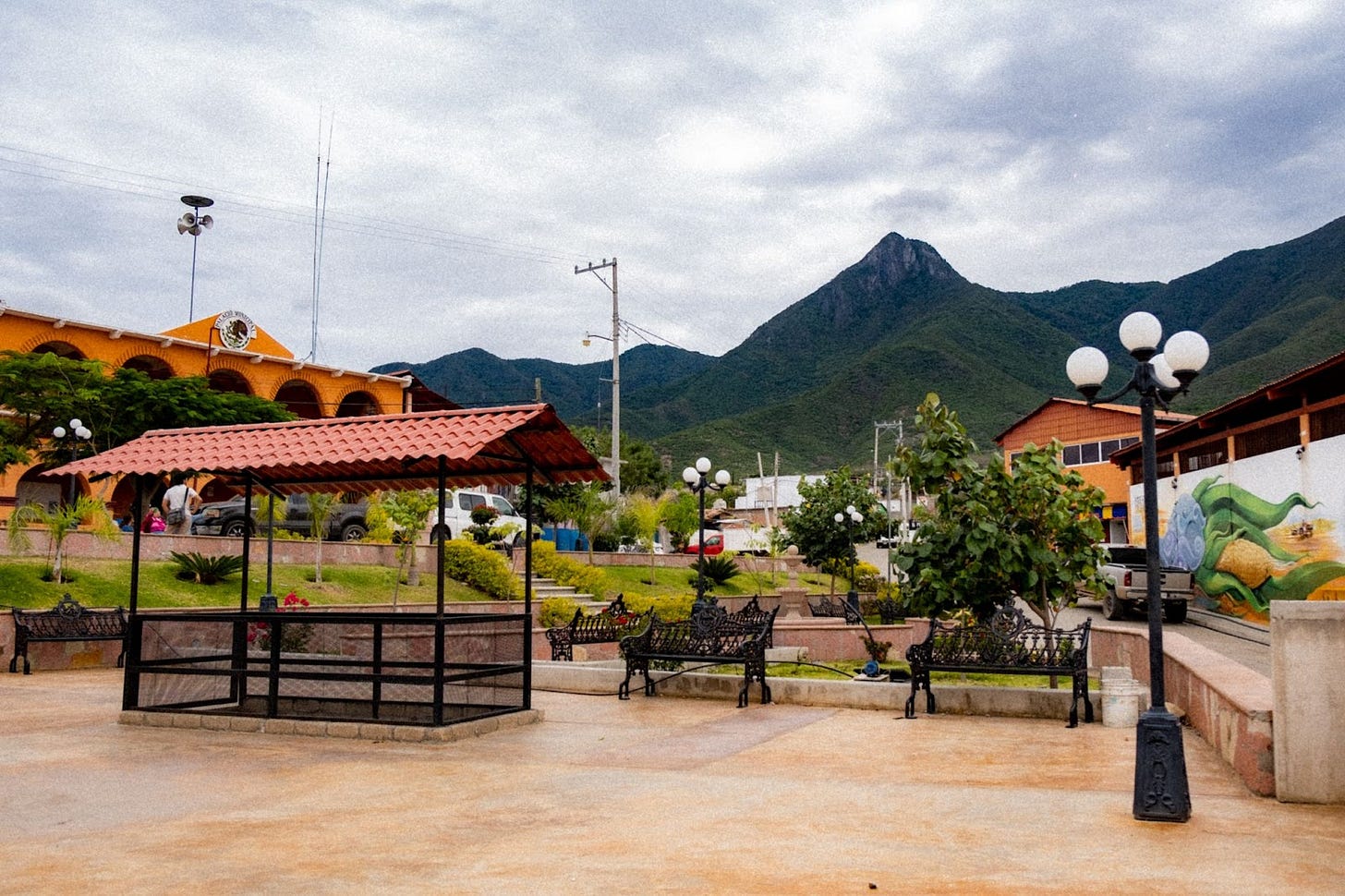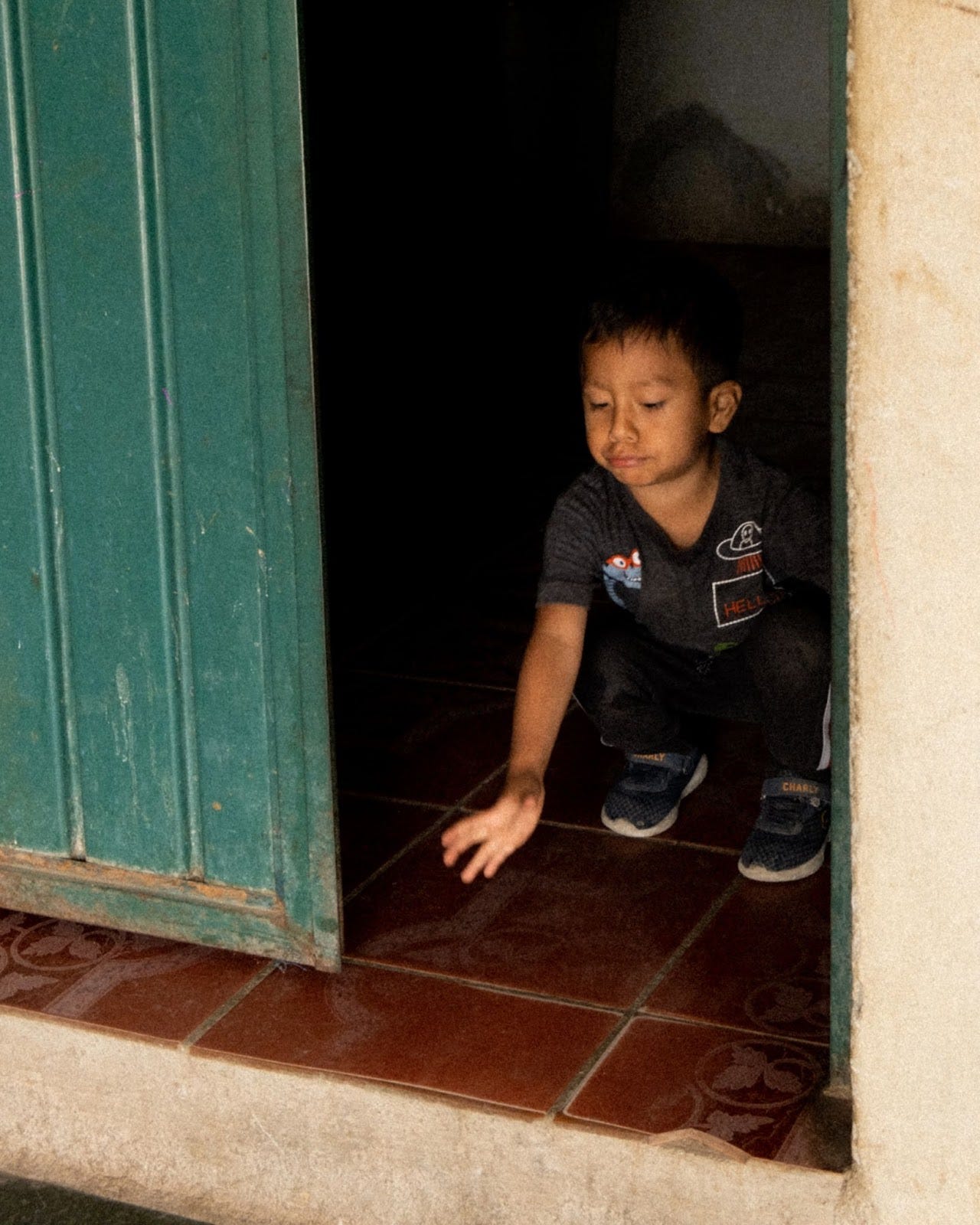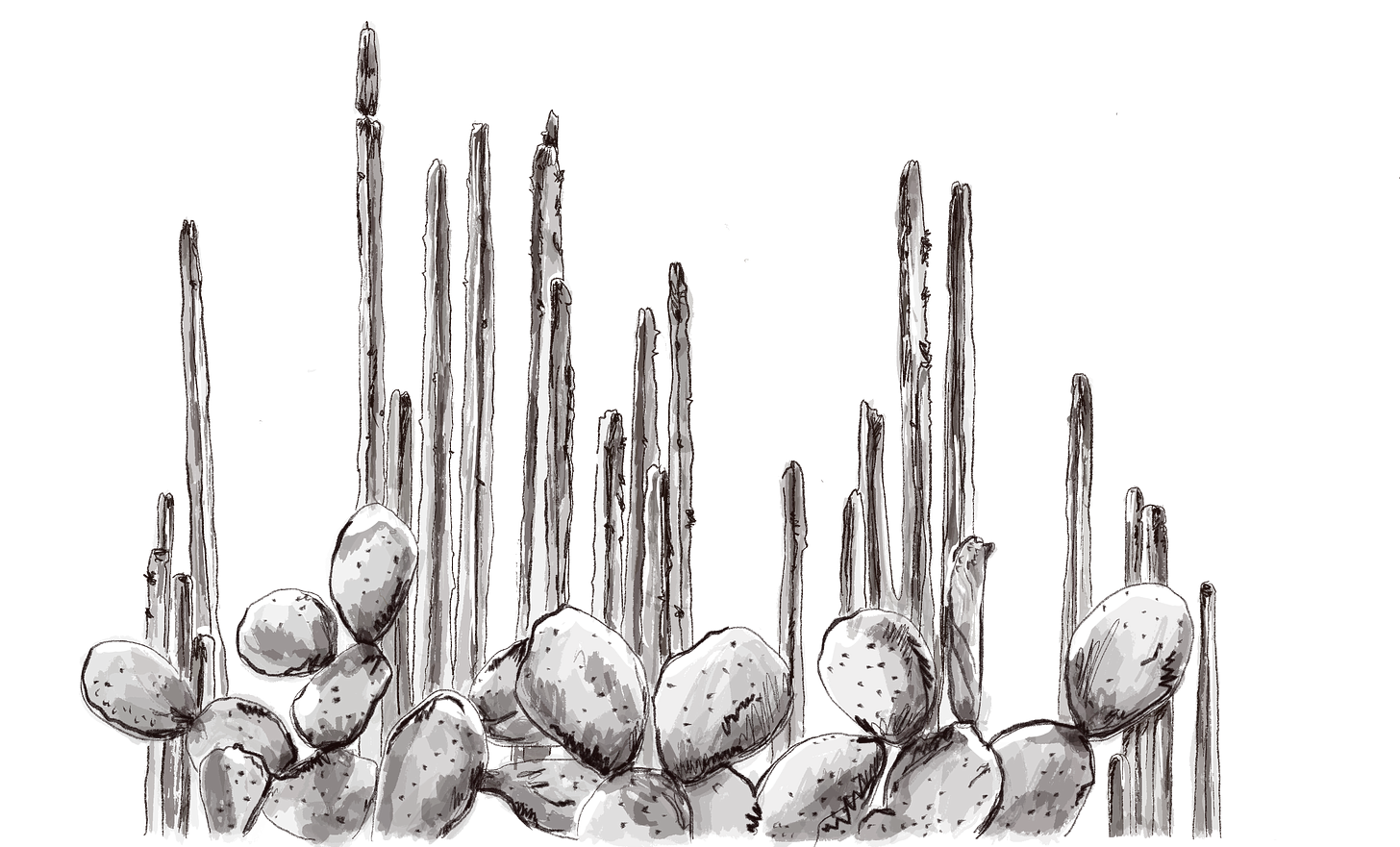A Day in the Life of Isabel Hernandez in San Bartolomé Quialana, Mexico
Conversation between Shelley Kleyn Armistead and Isabel Hernandez, translated by Santiago Reyes Kalfopulos.
We recently joined Isabel Hernandez, Gjelina Group Executive Chef Juan Hernandez’s sister and Gjelina LA Head Chef Rafa’s cousin, in Oaxaca to chat about her hometown of San Bartolomé Quialana, how it has changed since Chef Juan departed for California, and what she thinks her community needs most now. We visited her at the thriving beauty salon she’s owned for the last 10 years in downtown Tlacolula (the five customers coming in to inquire about a haircut or getting their eyebrows done in the 15 minutes while she was cleaning up after closing are a testament to her success) and accompanied her to San Bartolomé Quialana, where we had the honor of meeting with her parents, Felix and Emiliana. We toured downtown, stopping by the town’s church and the plaza where Juan’s school used to be, and were welcomed into Felix and Emiliana’s home, where Juan grew up and Isabel currently lives.
Shelley Kleyn Armistead: Isabel, I've been working with your brother Juan for eight years now, and he is now the executive chef of the whole company.
Isabel Hernandez (via translator Santiago Reyes): I'm really proud of him.
He is amazing, and having met with you now three times and your parents, and of course working with Javi too, one of your other brothers, you're a wonderful family.
What do you remember about growing up with Juan and Javi?
I spent little time with them, but it was unforgettable. Just spending time with them was beautiful. I really miss them.
I know. Every time I see you, you express emotion about how much you love them, how much you're proud of them, and how much you miss them. You're such a wonderful sister.
Thank you.
Why did you choose not to go to America?
I never really felt like going, and I also didn't want to leave my parents.
That's what I thought, and I wonder if that feels like a lot for you, you know.
I'm at peace with the decision I've made. I would like to see them, but I trust that they will come back one day.
Juan wanted me to study for a college degree, but I wanted to study as a stylist. He helped me pay for my studies, and then I was able to open my beauty salon. It has been open for 10 years already.
Is the San Bartolomé Quialana you live in now different to what Juan grew up in?
Yes, of course. Before, the houses were very different, now they have changed a lot. When Juan grew up here, there weren't parks to play in, but now we do have parks. The school we went to isn't there anymore — it's a park. They moved the school to downtown San Bartolo.

What age does the school go to now?
Kindergarten to middle school.
And if they want to go to high school?
They go to Tlacolula.
By bus?
By taxi. There used to be buses, but now it's all taxis or trucks that are called mixto. People used the taxis more than the bus because it is faster.
I hear the same thing about Tlapazola — no more buses.
Yes, it's the same.
What was your favorite thing, your favorite memory, about growing up in San Bartolomé Quialana?
Christmas is one of my favorite moments because I was with my family.
Are there any specific dishes that feel most like home to you?
Mole, cooked in a clay pot, is one of the dishes that reminds me the most of Quialana.
What foods do you associate with growing up in San Bartolomé Quialana?
Isabel’s mother, Emiliana: I used to cook frijoles quebrados, “broken beans,” the most for my children. It’s a way to prepare black beans. Back in the day, there wasn’t a plaza in Quialana, so buying cow meat wasn’t that easy, but I bought it on some occasions in another market on Sundays. Cow meat was something they definitely enjoyed eating.
San Bartolomé Quialana is known for garbanzo beans — can you share more about what is unique about these?
Emiliana: We make tortillas out of garbanzo beans, garbanzo tortillas.
Isabel: We also make garbanzo bean candy. We make it into a dough with some corn and sugar, and we bake it.
Have you always had an instinctual understanding of cooking? Do you remember what the first things were that you learned how to cook?
Emiliana: When they were kids, between six and eight years old, they had to cook for each other when we left for work.
Isabel: The first thing I learned to cook was eggs. I remember I used to cook eggs with potatoes for my brother and sister. Juan loved that dish. He ate it with salsa. When my brother used to take care of sheep, I used to cook for him and I liked cooking eggs with potatoes the most. My mother taught me how to cook beans, soup, and also garbanzo beans when I was very young. I also learned how to cook tasajo asado.

What other food traditions feel most important to you — maybe things that you like enjoying with your family or that you remember your family members enjoying most?
Isabel: My mother always cooked white cow meat broth with vegetables. She really loved to cook that, and we loved to eat it.”
What dishes (ceramics, cooking pots, specific utensils) do you rely on most?
Emiliana: Nothing special. We used to cook with firewood a lot. We didn’t use clay pots that much, though.

What other flowers, plants, or vegetables are most abundant in San Bartolomé Quialana?
Isabel: There is a lot of chepil around here. We ate that a lot. We also grow a flower called penumbre, but due to the lack of rain this year, the plant did not flower. We also grow cempasúchil here. Some people grow basil to sell in the market. We also grow corn and garbanzo beans, but the lack of rain is ruining this year's production
Emiliana: There are also many people growing agave nowadays.
What do you feel your community in San Bartolomé Quialana needs most right now?
Isabel: I would definitely say a playground would be very good for the children of Quialana. Also a place for them to play soccer and basketball. We have a multipurpose court for soccer, basketball, and volleyball, but it has not been taken care of for a long time so it's cracked and it's not usable anymore.
Chef Juan works with Chef Pedro. They opened a new restaurant called Valle, making Oaxacan food. Chef Pedro is from San Marcos Tlapazola. Chef Pedro remembers running from San Marcos to San Bartolo to play basketball, and whoever won would win a case of soda. So when Chef Pedro came back to San Marcos Tlapazola, he saw that the children didn't have anywhere to play and he helped build basketball courts for them. And he really believes San Marcos needs a sports coach for kids to keep them active.
Yes.
Is there anything else you feel San Bartolomé Quialana needs?
There also isn’t a dentist here anymore.
Would there be a building for a dentist?
There is a building, but there's no doctor. They need tools, too.
Do you think we would find a dentist? If we helped with the equipment, I wonder if we would find someone.
The equipment may have been the reason why the dentist left.
That's what I'm thinking, if we help with the equipment, it would bring a person maybe.
The dentist was put there by the government. We do not have a hospital, but we have a clinic, and the dentist was in the clinic.
Was your cousin Rafa in San Bartolomé Quialana when you were growing up?
Yes. We played canicas — they're glass balls — with Armando and Jorge. Jorge is Armando's brother.
Oh, marbles!
Juan has a cousin on each side of the family working with them in the kitchen. Rafa's one sous chef and Armando's another. It's amazing, they look after each other. Yeah, it's really cool.
Gracias, Isabel. Thank you for your time, and you let me know if there's anything I can do for you.
Muchas gracias también a usted. I miss my brothers a lot.











I Know Juan Since we were 5 years old
My Name is Rumualdo, he is really a good friend
And great example for alot of us, That we could achieve great things in life, so happy reading this about him and his family,
God Bless him
Amazing story of family connection and how the soil and plants connect us all! Well done.